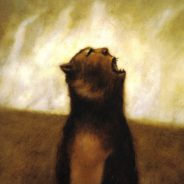Writing Exercise #27: What Am I Here For (Part 2 of 2)
If you haven’t already looked at the first part of the exercise you can find it here. This second part of the exercise, presented below, will lead you to fill in the third and fourth rectangles on the sheet of paper—and then invite you to take a next step—and perhaps a next one. At the top of the third rectangle write: WHAT’S IMPORTANT TO ME Here you list any and all things that are important to you, moving again, if you like between the concrete and the more abstract. In the final rectangle you write: WHAT I FEEL I MUST DO BEFORE I DIE I’ve seen people write everything in this rectangle from visiting a certain country to reconciling with a particular person to finally getting their hair right. Make this list as long or as short as you like. When you’ve finished filling in the four rectangles, take out another sheet of paper and fold it into four rectangles like before. On this new sheet of paper you are going to record four images, one in each rectangle, each image corresponding to one of your lists. In order to discover these images, you may want to give yourself a block of uninterrupted and quiet time—say, twenty to thirty minutes if possible. Then, beginning with the first list—What Do I Like? / What Do I Love?—read the list, either silently or aloud, over and over, noticing what image begins to arise from the list. This image can be anything that you can see or hear or touch. It can be a shape or an object—a color—an activity—a creature—a person—a vegetable—anything that seems to fit somehow with the list that you’ve created. The idea is to find a single image that resonates with the entire list. If you find it difficult to choose one best image—just pick an image—any image that appeals—knowing that you can always come back and change the image—revise it—amend it—if you want to later. You can write a word for this image—or you can draw it. Either. Then move on and do the same with the second list, and the third, and the fourth. You can, if you like, do this over a period of days. When you finish you will have a piece of paper with four images that can all be considered aspects or facets of your purpose. You can carry these four images around with you—in your pocket—or in your pocketbook—or in the back of your mind. You can hold them lightly. It may happen that the four images seem to want to come together into a single image. If so, you can draw or write this single image at the center of a new sheet of paper. When you finish you will have a single image or a series of images—either. This image—or series of images—can become, if you like, a kind of touchstone. It can become your own North Star. It can become something you write about now and then—or something you hold in the back of your mind. It can become something you can steer by when it seems like the wind is blowing this way and...
read more
